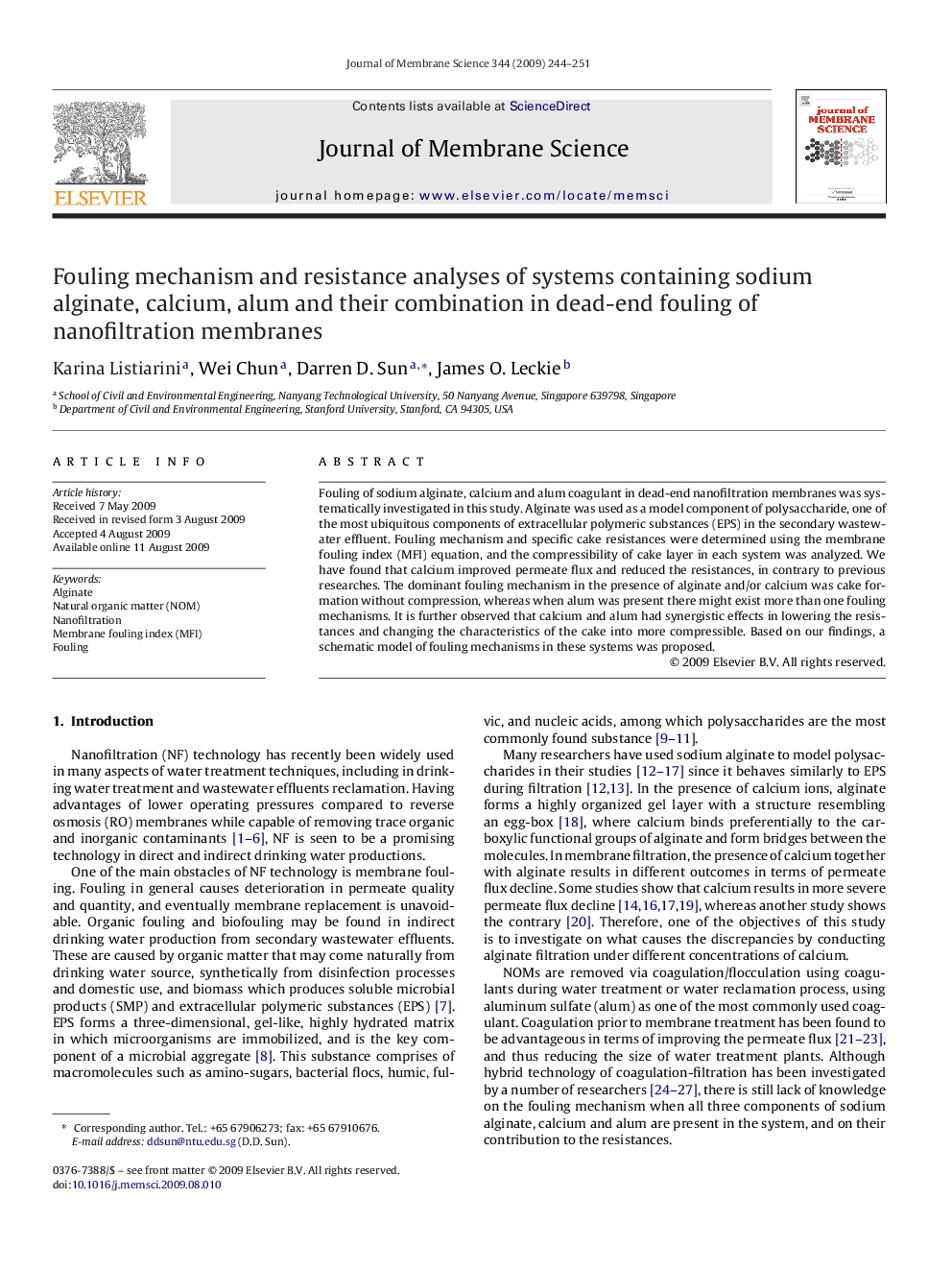| Article ID | Journal | Published Year | Pages | File Type |
|---|---|---|---|---|
| 636748 | Journal of Membrane Science | 2009 | 8 Pages |
Fouling of sodium alginate, calcium and alum coagulant in dead-end nanofiltration membranes was systematically investigated in this study. Alginate was used as a model component of polysaccharide, one of the most ubiquitous components of extracellular polymeric substances (EPS) in the secondary wastewater effluent. Fouling mechanism and specific cake resistances were determined using the membrane fouling index (MFI) equation, and the compressibility of cake layer in each system was analyzed. We have found that calcium improved permeate flux and reduced the resistances, in contrary to previous researches. The dominant fouling mechanism in the presence of alginate and/or calcium was cake formation without compression, whereas when alum was present there might exist more than one fouling mechanisms. It is further observed that calcium and alum had synergistic effects in lowering the resistances and changing the characteristics of the cake into more compressible. Based on our findings, a schematic model of fouling mechanisms in these systems was proposed.
